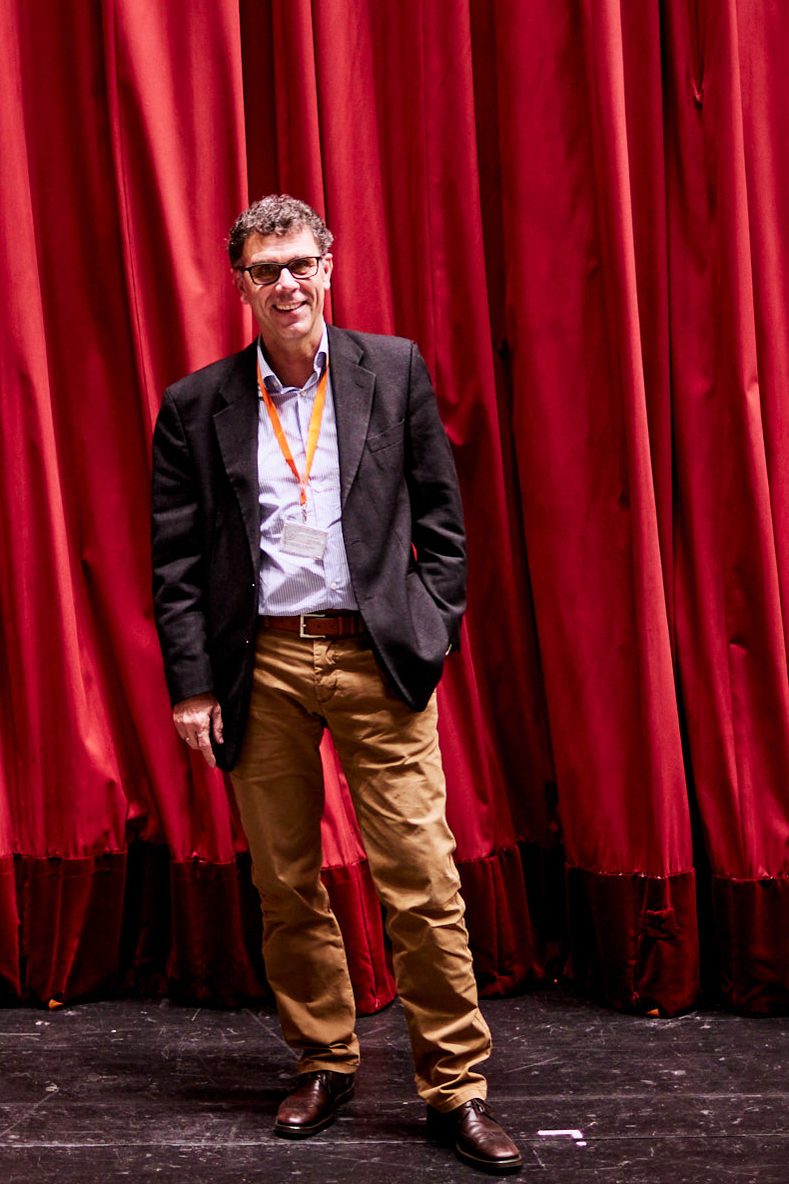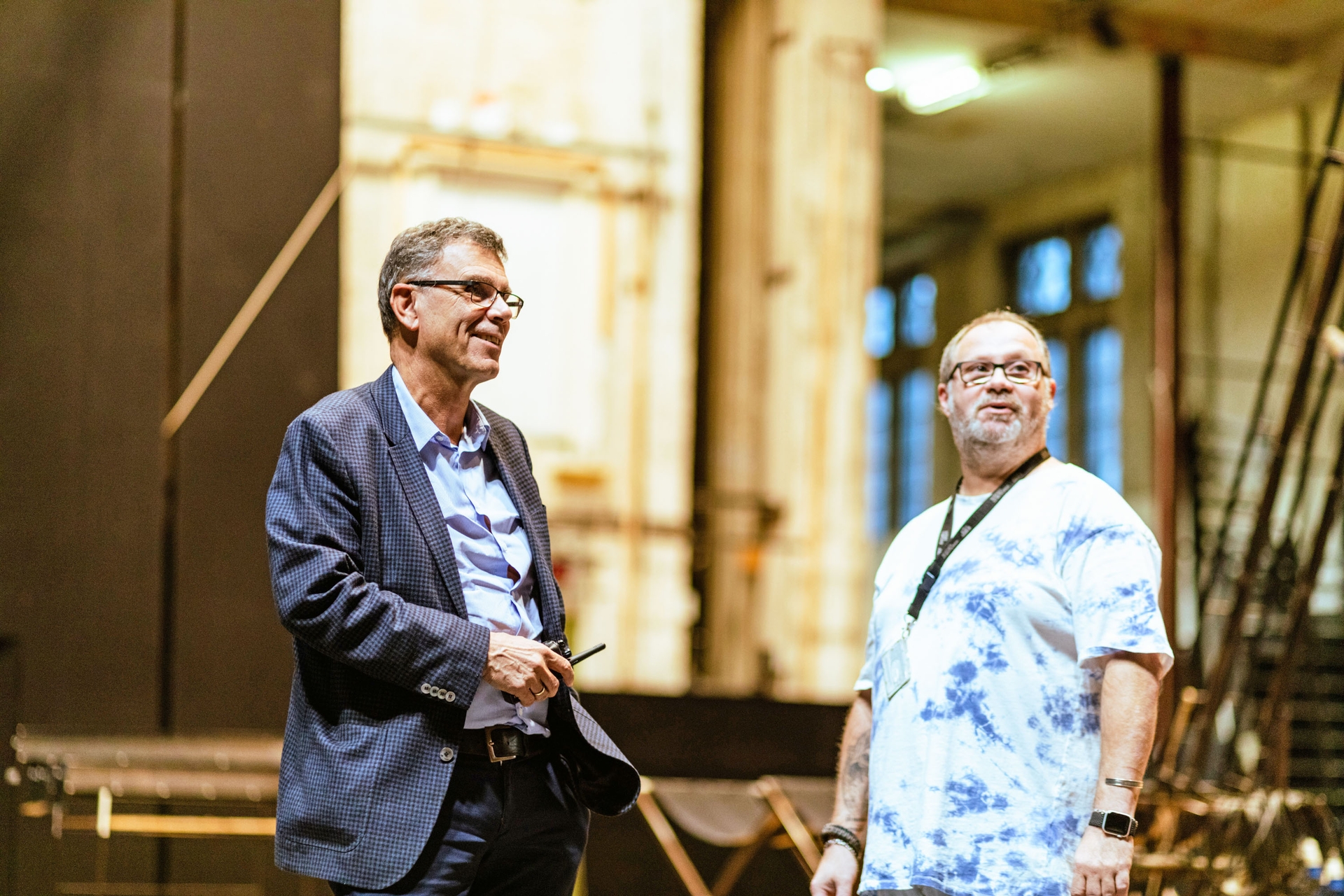A piece of state opera history
News |
Following the revival of Pique Dame on Saturday, June 21, 2025, Peter Kozak, long-time Technical Director of the Vienna State Opera, was made an honorary member of the opera house on the Ring. He can look back on a 40-year relationship with the Vienna State Opera, where he began his career on March 1, 1985 - as Technical Director, he has played a key role in shaping the opera house for more than 20 years, overseeing almost 400 new productions and around 11,500 performances. Peter Kozak will retire at the end of the season. The Vienna State Opera warmly congratulates Peter Kozak on this honor and thanks him for four decades of tireless commitment to the opera house on the Ring!
Peter Kozak's successor as Technical Director of the Vienna State Opera is DI Ulfried Grabner.
Whenever you entered the State Opera, he was already there. And seemingly at the same time in the most diverse places in the house: on the stage, at a meeting, in his office, in the auditorium, on a rehearsal stage a few floors up etc. A former director of the theater described the fact that it wouldn't work without him as follows: "Actually, it's not me who makes the repertoire, but him, Peter Kozak." That wasn't true, of course, but it was a bit true. After all, who else but him could tell all the State Opera directors he had assisted over the decades exactly which pieces from the huge repertoire could be shown in succession every evening, purely in terms of the nature of the stage set? None. Peter Kozak was in charge of all the information channels of the technical departments, but not only these departments. And he knew the company like no other, perhaps even like no other. After all, his inaugural contract was signed by short-term director Lorin Maazel. Back then in the mid-1980s. Since then, a lot of state opera history has been written - and Peter Kozak has played a significant role in shaping it. Step by step, he held increasingly important positions until he was appointed Technical Director of the opera house more than 20 years ago.
But first things first! Nobody could have told him that he would become such an important figure in one of the most important opera houses in the world. However, his youth was not entirely without music: after studying piano for several years, he even studied percussion - although the latter suited him better. But that was it in this field for the time being. The path to the heart of Vienna's most important temple of music was to follow the path of technique. Or actually via a fistball acquaintance. When Peter Kozak heard from one of his fellow players, an employee of the State Opera, during an afternoon training session that a position had become vacant in the opera house's technical department, he did not hesitate for long. After all, after five years working for Deutz, designing diesel engines offered him far too little variety.
At the time, however, he could not have imagined the abundance of variety he would find at the Vienna State Opera. But who has an insight into this house of wonders who is not allowed to work in it? In short: boredom is unknown here. Or, as Peter Kozak himself puts it: "No production resembles another, the challenges - sometimes quite persistent ones - are always different, sometimes unexpected, sometimes feared. Depending on the director and set designer. But in the end, and that's the beauty of it all, we manage to realize the most diverse dreams of the leading team." And so his answer to the question of what fills him with the greatest pride, looking back on the four decades he has spent here, is half ironic, half serious:
For Peter Kozak, it was a total of 11,466 evenings on which "the curtain went up after all". Was he ever worried about a major technical mishap? Apparently not really, because on the one hand, as stage sets become ever more elaborate, safety precautions of all kinds are also being tightened up. And on the other hand - see above - it was no coincidence that he spent most of the days and nights on site and was able to intercept a lot of things. On the day of the Opera Ball, such a service even lasted an uninterrupted 36 hours on a voluntary basis. But as Peter Kozak says with a laugh: "After all, when we were young, we also spent our nights in discotheques." As I said, there was plenty of variety. Even if that meant taking a plane to Tokyo in the morning to prepare for a guest performance, getting important things off the ground there and being on his way back to Vienna the very next day. The Vespri siciliani performance, in which the side walls of the stage set had not yet been put up when the conductor began the overture (the curtain was still closed), was certainly an adrenaline rush. In the end, it all worked out that evening too. Will the little horseshoe that his wife once bought him at a Christmas market and that he has carried with him ever since bring good luck? Who knows for sure? In any case, the fact is that in all those years, only one rehearsal had to be stopped prematurely - and that was not for technical reasons, but because the power supply had become unstable.
It is also a fact that in the long period of Peter Kozak's tenure, many aspects of the stage technology have been fundamentally renewed and changed: old hydraulic systems have been replaced by computer-controlled electrical systems, the huge circular horizons have been replaced and the requirements of modern theater operations have been met in all areas. Changes imperceptible to the audience, revolutionary upheavals for the technology. And Peter Kozak has always been there, i.e. in the four decades since he took office, there is a small gap in which he moved to the Volksoper for a short time as Technical Director. His predecessor there had retired and a competent, experienced successor was needed. As two long-serving colleagues at the Vienna State Opera had the prospect of the soon-to-be vacant post of "technical director", Peter Kozak was happy to accept the offer. But shortly afterwards, an early morning phone call from the then director of the State Opera, Ioan Holender, informed him that the two colleagues would not accept the succession and that it would not work without him. So he left the smaller house on the Gürtel to return to the house on the Ring. This time as its Technical Director. Since then, countless cups of espresso and just as many Lindt balls, which his employees regularly sent him, have helped him to master the big and small difficulties of everyday theater life. But of course also special productions, such as Gounod's Roméo et Juliette, which he grew fond of, not least because of the revolutionary lighting architecture. Or the new Tannhäuser with its impressive scenic solutions. And, of course, "all the wonderful music".
Peter Kozak will probably only appear to be leaving this world when he retires at the end of the season. After all, once you have fallen in love with this house, you never fall out of love with it. And so it would come as no surprise to anyone if they continue to find him not only in the auditorium, but also in the backstage area.


